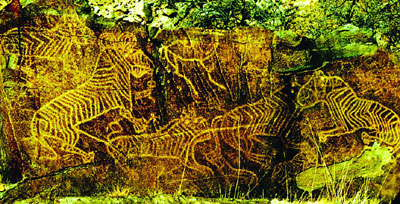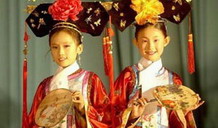Rock Paintings of Yinshan Mountain

The rock paintings of Yinshan Mountain are scattered over a wide area. More than 1,000 rock paintings can be found in this area.
The earliest record of the rock paintings of Yinshan Mountain in the world is the renowned "Work-Commentary on the Waterways Classic" by Li Daoyuan, a geologist of the Northern Wei Dynasty (386-534 A.D.). A comprehensive survey of the rock paintings started in 1976. Since then, more than 10,000 rock paintings have been discovered, and nearly 1,000 of them have been photographed or copied.
These rock paintings not only reflect the beliefs, aesthetic standards and world outlook of the ancient in habitations in Yinshan Mountain areas, but also present a truthful picture of their nomadic life.
The themes of the rock paintings are in general the hunting activities of the nomadic ethnic groups. Among the rock paintings, the most numerous and most finely drawn ones are pictures of animals, including goats, sheep, argali, antelopes, blue sheep, elks, white-lipped deer, cervus elaphus, David's deer, moose (also known as han da an), roe deer, horses, mules, donkeys, camels, oxen, wild oxen, takins, dogs, turtles, wild boars, rabbits, foxes, snakes, wolves, tigers and leopards. Scenes of hunting represent the social life of the prehistoric nationalities. Scenes of hunters, weapons and hunting techniques are depicted in the paintings.
Certain rules were followed in the themes and distributions of the rock paintings of Yinshan Mountain: drawings of wild animals are found mostly on rocks on mountaintops, scenes of hunting generally half way up the mountains, while head portraits of gods, celestial bodies and constellations are mostly engraved on steep cliffs in the valleys or on giant rocks on hillsides by valleys (primitive people believed that gods lived in places of swift currents). These rules are in conformity to the social environment in which the paintings were drawn and the ideologies held by people then.






